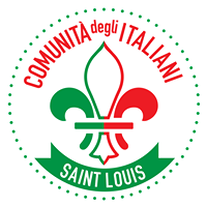St Louis - Bologna Sister Cities: 2nd Annual Italian Christmas Concert featuring Benedetta Orsi11/18/2019 MICHAEL CROSS President, St Louis - Bologna Sister Cities The St Louis - Bologna Sister Cities and Grace UMC Church invite you to the SECOND ANNUAL ITALIAN CHRISTMAS CONCERT featuring internationally acclaimed mezzosoprano BENEDETTA ORSI who hails directly from our sister city, Bologna.
The concert will also feature international guests: Soprano, STELLA MARKOU Pianist, ALLA VOSKOBOYNIKOVA Tickets available on Eventbrite @Concerto di Natale https://www.eventbrite.com/e/concerto-di-natale-tickets-72549051165?aff=eac2# Don't miss this heartwarming holiday concert in the inspiring UMC Grace Church located in the Skinker-DeBaliviere neighborhood at 6199 Waterman Blvd. St Louis, 63112 (at Skinker Blvd near Washington University). Tickets range from $5 to $20. The concert begins at 7PM with a reception and opportunity to meet the performers directly following the performance. The Italian Community of St Louis will provide a selection of traditional Italian holiday desserts for all to enjoy. ABOUT BENEDETTA Italian mezzo-soprano Benedetta Orsi has been praised by Teresa Berganza as “perfect voice for belcanto.” She is one of the 2018 nominee for Outstanding Achievement in Opera by St. Louis Theater Circle for her Carmen, reviewed by Broadway Opera World: “Benedetta Orsi has a quite breathtakingly beautiful voice, full and rich, with such easily accessed resources of power. She gives us a simply perfect “Habanera". Orsi is one of only a few contemporary mezzo-sopranos to have performed all three of Donizetti's Tudor Operas: Jane Seymour in Anna Bolena, Elisabetta in Maria Stuarda and Sara in Roberto Devereux with Royal Opera Theater in Manchester, UK. Recent performances also include Adalgisa in Norma with Winter Opera St. Louis, the title role of Carmen with Winter Opera St. Louis, Boulder Symphony Orchestra in Colorado, and Amore Opera in New York, Mamma Lucia in Cavalleria Rusticana with the New Jersey Festival Orchestra, Ulrica in Un Ballo in Maschera with the Miami Lyric Opera, and Maddalena in Rigoletto with Amore Opera in New York. Her first album Christmas Around the World won the Silver Medal at the Global Music Awards in Los Angeles as Best Album and Best Female Vocalist. Her new album La Voix de l’amour, a collection of French operatic arias and art songs, will be released this Winter for the International label Limen Music. Along with concert appearances at Carnegie Hall in NYC and throughout Italy, England, United States and Spain, Orsi’s performance credits include roles in Verdi's Rigoletto, Trovatore, Bellini's Norma, La Sonnambula, and Romeo and Juliet, Rossini's L’Italiana in Algeri and Il Turco in Italia and Massenet's Werther. Benedetta is a first prize winner of the Barry Alexander International Voice Competition (IVC), First Prize and Star Performer Award in the American Protégé IVC; Third Prize Winner of the Roschel IVC, and Audience & Orchestra Award in the Boulder Music Institute IVC. In her homeland, she received the Audience Award and Special Prize of the Italian Music Federation during the 28th International Piero Boni International Singing Competition. Orsi received her bachelor degree in Music and Voice from Modena’s Istituto Musicale Pareggiato Orazio Vecchi, pairing her studies with numerous master classes and stage workshops taught by opera luminaries such as Marilyn Horne, Luciana Serra, Teresa Berganza, and stage director Chuck Hudson. Later, she received her Master in Voice at the Regia Accademia Filarmonica di Bologna.
0 Comments
GIOVANNA LEOPARDI Director, St Louis Italian Language Program This year I was honored to assist in the founding a new Italian language program in St Louis with friends and supporters at the Italian Community of St Louis (Comunità italiana di St Louis). It would not have been possible without having met Antonio Di Tucci of Gateway Science Academy, a public charter high-school in St Louis. He was instrumental in obtaining a home for our classes.
As the director of the program, I'm pleased with the response of so many new students and former students who have signed up for the classes. Along with my colleagues, Concetta Lo Iacono Gabriele, Federica Bertolini, and Donatella Lanzara, I express my gratitude for all who are journeying with us in our new adventure. This semester, our very first, has begun with over 50 students signed up in three different classes: Beginners Italian, Advanced Italian, and Conversational Italian. Next semester, beginning in Spring 2020, we will add more classes as well as additional teachers. Each of our professors come directly from Italy and have advanced degrees in the Italian language. Furthermore, we use the immersion methodology of teaching a secondary language as this has been shown to be the most efficient and effective way of learning a foreign language. In addition to our classes for adults, our Italian classes for children have continued to be a success at St Ambrose parish center. Our theme, Imparare L'italiano Giocando, which translates as "learning Italian while playing" has been effective in engaging children of all ages to interact with each other in the Italian language. The number of children and parents participating has grown especially this semester. I am excited for the possibilities that we have yet to encounter along the way. For the moment, I am thankful for what we have accomplished as an Italian community and especially thankful for being able to provide Italian classes for my students with the resources, classroom setting, and environment that they deserve to learn Italian in the most effective way. I invite you all to invite your friends and family members to attend our Italian classes and I look forward to meeting many of you in person. SCOTT HOFF Presidente, Club Italiano per piacere Cari amici,
Spero che tutti si siano divertiti quest’estate. Alcuni di noi hanno avuto il piacere di vedere alcuni di voi a vari eventi come la festa di Ferragosto e The Festival of Nations mentre per altri la riunione di Ottobre rappresenterà la prima opportunità di riunirsi con altri appassionati della lingua e cultura italiana da mesi. Per la nostra riunione di Italiano per Piacere a Ottobre, avremo un’opportunità speciale. Sebbene spesso ascoltiamo discorsi che parlano di un tema storico, con il nostro prossimo incontro, avremo la possibilità di ascoltare un tema all’avanguardia. Lo stimato Simone Bregni della Saint Louis University verrà a parlarci di un nuovo sistema didattico sviluppato da lui stesso. Il Professore Bregni ci ricorda che orma la metà degli adulti e 70% degli studenti universitari ammettono di giocare ogni tanto a videogiochi. Il Professore Bregni, un vero appassionato dei videogiochi, ha trovato che i videogiochi funzionano benissimo per rafforzare la grammatica e il vocabolario che viene insegnato già con i metodi tradizionali. Inoltre, i videogiochi vanno oltre l'esperienza offerta nelle lezioni tradizionali e possono esporre agli studenti importanti dati storici e culturali. Il Professore Bregni ha messo queste idee in pratica con il corso in cui insegna la storia del rinascimento medioevale. Con l’aiuto della piattaforma Playstation, il Professore Bregni trasporta i suoi studenti con la sua macchina del tempo nella Firenze del 1476 nel videogioco Assassin’s Creed. Gli studenti possono apprezzare l’architettura, vedere come sono progettate le città italiane e interagire con un altro mondo e un altro tempo. Lo scopo di ogni attività è sempre di rafforzare obiettivi didattici. Il Professor Bregni, con la sua perizia del mondo dei videogiochi, riesce a selezionare il videogioco ideale per ogni scopo. Gli studenti possono imparare da varie esperienze virtuali. Queste esperienze variano dal lavorare come un detective, al lavorare come assassino medioevale al vivere una semplice mattinata in famiglia in cui bisogna fare la colazione insieme e fare i lavori di casa. È palese che il Professore Bregni è bravo a insegnare l’italiano. Tuttavia, il Professore Bregni si distingue per la sua passione. Non si ferma solo ad essere un appassionato dei videogiochi. Non si accontenta solo di essere un bravo professore. Invece, lui ha guardato dentro di se per trovare un modo di creare qualcosa di nuovo e bello. Ha disegnato un approccio nuovo per rendere l’apprendimento delle lingue più efficace e divertente. Cosi, è riuscito a motivare e ispirare non soli i suoi alunni ma anche alunni e studenti in tutto il mondo. Dopo essere stato invitato a parlare in vari paesi europei, il Professor Bregni ha anche accettato il nostro invito di parlare a Italiano per Piacere. Spero che tutti colgano l’occasione di sentire il Professore Bregni e di ringraziarlo per il lavoro che ha fatto e continua a fare per promuovere la lingua e cultura italiana. QUANDO: Mercoledì, 2 ottobre 2019 dalle 18,30 alle 21,30 DOVE: Pan D'Olive 1603 McCausland Avenue St. Louis, 63117 REPRESENTING ITALIAN INTERESTS AT THE HIGHEST LEVELS OF ST LOUIS GOVERNMENT - GROWING GLOBAL 20199/26/2019 MICHAEL CROSS President, St Louis - Bologna Sister Cities The World Trade Center of St Louis hosted its annual convention Growing Global on Wednesday, September 25, 2019 at the Ritz Carlton in Clayton, Missouri. The conference brings thousands of individuals and businesses together from around the world in what is St Louis' largest and most high profiled international event. As the president of the St Louis - Bologna Sister Cities organization, I was humbled to represent Italian interests in the St Louis region. I had the chance to speak with former Mayor Francis Slay and County Executive Sam Page, both of whom expressed their interest in St Louis' growing Italian population. The purpose of the St Louis - Bologna Sister Cities organization is not only cultural but also economic. Bologna is the capital of Emilia-Romagna, known as the breadbasket of Italy. Agriculture thrives in this rich area and consequently, Emilia Romagna is known as a great gastronomic center of Europe. St Louis, with major agricultural companies and institutions such as Bunge, ItalgraniUSA, Bayer/Monsanto, and the Danforth Plant Science Center, is at the center of America's agricultural sector.
It seems as if a relation between these two cities was always meant to be. Seeing that local government officials are interested in the growth of the Italian expat community, it is looking as if the cervelli in fuga phenomenon may continue the brain drain that Italy has been experiencing for the last decades. Will there be more Italian based ag sector businesses moving to St Louis in the next few years? That remains to be seen. As for our part, the St Louis - Bologna Sister Cities will continue to encourage interest in relations between our two cities and regions regarding ag-tech and ag-science ventures. CAMILLO CAETANI Correspondent, Chicago The Italian Community of St Louis has been growing at a rapid pace in the past three years due to strong leadership and a growing economy. In the past decade alone several hundred Italian nationals have relocated to the St Louis area according to reports from the Italian Consulate of Chicago.
On Saturday, August 17, the community along with the St Louis - Bologna Sister Cities and the club Italiano Per Piacere, hosted a celebration of Ferragosto at Shaw Park in the St Louis suburb of Clayton. Over 200 people attended, many of them Italian exchange students and post-docs from local universities such as Washington University and Saint Louis University. Much fun was had by all. Many of the participants this year were newcomers to St Louis, a city located in the center of the United States and a hub for the agricultural technology sector. Several young Italian professionals stated that they worked for the Danforth Plant Science Center and Bayer which has just bought out Monsanto. Others came to St Louis as entrepreneurs and have begun their own private businesses such as Giorgio Bucci who is CEO of Arteco Global, an IT company which sells video surveillance software. Representatives of two local media outlets, FOX2 News and a local Italian-American newspaper Il Pensiero, were present interviewing members of the Italian community. PURUS VODKA, a sponsor of the event was also present providing Italian inspired cocktails. The company has its headquarters in St Louis while its production remains in the northwest province of Piemonte using water from the Alps to produce a distinguished vodka. Italian karaoke was most likely the most memorable highlight of the evening for guests of all ages. Nothing was formal about the event as is the case with any ferragosto party. Coming down from Chicago to St Louis, I was slightly skeptical about how large of an Italian community St Louis could have. Now I'm thinking about moving to the Gateway City. MICHAEL CROSS Presidente, St Louis - Bologna Sister Cities Una nuova avventura insieme alla Maryville University qui a St. Louis. Vittorio Sasso, Massimiliano Simonazzi, ed Emil Antonacci sono pronti per affrontare un nuovo anno accademico e sportivo negli Stati Uniti.
Vittorio Sasso, Massimiliano Simonazzi, and Emil Antonacci have just arrived from Italy this month and are eager to begin their new adventure on Maryville University's soccer team. The three received soccer scholarships from the university. The Italian Community of St Louis will be present to cheer them on at the team's home game vs Christian Brothers University on Sunday, September 8th. Kickoff is at 11am at Maryville University's new soccer stadium in Chesterfield, Missouri. All are welcome to attend. MICHAEL CROSS President, St Louis - Bologna Sister Cities The first batch of Italian exchange students arrived on Friday, August 1st at St Louis Lambert International Airport. Bianca, Chiara, Samantha, and Luna were all smiles as they met their host families for the very first time. CIEE International has partnered with the Italian Community of St Louis and the St Louis-Bologna Sister Cities Organization, to operate an Italian exchange student program under the direction of Celia Mullikin. Families around the St Louis metro area volunteer to host these highschool students for one school year, i.e., 10 months. Celia, the director of the program and a former teacher, is enthusiastic about her work. "I love these kids as if they were my very own," she told me when I first met her two years ago at our very first Ferragosto event.
Last year, the initial year of the program, we brought 6 Italian students to St Louis. For the 2019-2020 school year, our program is up to 10 Italian students. One of our ads in the St Ambrose bulletin got the attention of some families who live on The Hill. Sharon Gambaro and her husband Jeff were thrilled at the possibility of hosting an Italian exchange student. Sharon, the office secretary at St Ambrose Parish, said she didn't know St Louis had an Italian exchange program and was excited to host this year as well as promote the program among her friends. Riccardo and Jessica Hayes, will be hosting their second exchange student, Samantha, who comes from Gagliano del Capo in Puglia. Jessica, the event coordinator for the Italian Community has been dynamic to the success of our events which bring people together of all ages. She has hosted pasta making parties, a lasagna contest, and many fun events for the Italian students this past year. She and Riccardo go out of their way to make a "home away from home" for them as well as for the rest of our community. Another couple who live on The Hill, Christi and Jason VanBlarcum, are excited to host Chiara, a native of Pistoia in Tuscany. Last year the couple hosted two girls, a beautiful experience which changed their lives. The VanBlarcum's learned about our program through their neighborhood friends, the Hayes family, and were inspired to host again this year. The Italian exchange students will be present at the Italian Community's annual Ferragosto at Shaw Park in Clayton on Saturday, August 17th from 4pm to 10pm. For more details on the Italian exchange program, please send an email to: [email protected] The St Louis - Bologna Sister Cities will join the Festival of Nations on August 24 and 25, 2019 with a booth which will focus on arts and crafts for children as well as educating the wider St Louis public on our Sister City, Bologna. All are welcome to attend.
MICHAEL CROSS President, St Louis - Bologna Sister Cities Join the Italian Community of St Louis on Tuesday, October 29, 2019 at 8PM as we welcome the Four Italian Tenors direct from Rome, Italy, to the majestic Cathedral Basilica of St. Louis. For the first time in the United States, the Four Italian Tenors, ALESSANDRO D'ACRISSA, FEDERICO SERRA, FEDERICO PARISI, and ROBERTO CRESCA, will perform the greatest Sacred Tenor Arias and songs of all time, in unique arrangements, created particularly for their concert in St Louis.
Their performances are captivating, exhilarating, passionate, engaging and mesmerizing. Come hear this new generation of world-class tenors explore and present these classic works with panache, verve and vivacity, all in their own inimitable style. The Italian Community of Saint Louis is honored to welcome these four young tenors and is proud to participate in this historic event, the largest concert featuring Italian artists in St Louis history! A very special thanks goes to Scott Kennebeck of St. Louis Cathedral Concerts in giving members of the Italian Community of St Louis, our CLUB Italiano Per Piacere, and members of the St Louis - Bologna Sister Cities 20% OFF ALL TICKET PRICES. For the 20% off coupon code and additional information for a special meet and greet with the artists, please contact: [email protected] SCOTT HOFF Vice-presidente, Club Italiano per piacere Cari amici,
La presentazione per il mese di aprile intende illustrare i risultati degli scavi archeologici effettuati al sito tardo-antico di 'Ain el-Gedida nell'Oasi di Dakhla (Deserto Occidentale egiziano). Un complesso ecclesiastico, datato al IV secolo D.C., è stato scoperto e documentato sulla collina principale del sito. La particolare configurazione degli spazi, la datazione e le testimonianze di diverse fasi di costruzione rendono tale complesso un soggetto di studio particolarmente interessante. La presentazione intende, in particolar modo, evidenziare il contributo apportato da tale scoperta alla nostra conoscenza sulla diffusione del Cristianesimo nell'Egitto rurale della Tarda Antichità. Il presentatore sarà Nicola Aravecchia, nuovo docente di archeologia alla Washington University. Il suo campo di ricerca include l'archeologia greco-romana e cristiana, in modo particolare nell’Egitto tardo-antico. Il Dott. Aravecchia ha conseguito la sua laurea all’Università di Bologna, il master e dottorato all’università del Minnesota. Ha partecipato e diretto lui stesso gli scavi archeologici di cui sopra sotto gli auspici della Columbia University e della New York University (progetto diretto da Roger Bagnall) ed ha scritto due libri e parecchi articoli in merito. Sarà indubbiamente una presentazione di un soggetto interessante e vissuto di prima mano, veramente da non mancare. Diamo quindi il nostro caloroso benvenuto a St. Louis e al nostro club al Professor Aravecchia e arrivederci a mercoledì 3 aprile per un incontro che combinerà l’amicizia, la cultura e la buona tavola. Come il solito ci incontreremo nella nostra sede, il ristorante Pan d’Olive sulla McCausland alle ore 18:30. Prenotate al più presto rispondendo all’invito che riceverete via email da Evite, oppure chiamando Scott Hoff al 314-304-5972 o inviandogli una email a [email protected] UMBERTO MUCCI President, We The Italians Magazine Oftentimes, Italian or Italian American associations at the center of a community in one of the many American cities are led by exceptional Italian American men or women who have gained over the years the experience necessary to preside over a community that recognizes itself in loving and celebrating Italy. They are sometimes white-haired leaders who, with their charisma, represent Italy in their cities in an exceptional way.
Sometimes, much more rarely, these leaders are younger. They still exceptionally deliver, but they also bring innovation with a younger, dynamic approach. They are two different types of leadership, both winning. Today we meet Michael J. Cross, the young Italian who is revolutionizing the Italian community in Saint Louis, Missouri. Michael, you are the President of the Comunità degli Italiani – St. Louis. Please tell us something about the history, the activities and the vision of your association, one of the few with an Italian name in the US. First and foremost, I would like to say that it is truly an honor to be interviewed by We The Italians, one of the most comprehensive publications and media sites dedicated to the relationship between Italy and the United States. The Comunità degli Italiani – St. Louis, or as we are called in English, the Italian Community of St. Louis, is an official non-profit organization dedicated primarily to Italians living in the St. Louis metropolitan area but also to anyone who would like to learn or practice the Italian language and to those who are simply interested in Italian culture. We represent all Italians who have come to live in this part of the United States and especially the many in our community who have more recently immigrated. These new arrivals are proudly Italian and want to maintain their language, their culture, their customs; but they also desire to share their love for the arts, science, food and literature with the wider community. We are similar to other Italian associations in the US like Italians in DC, for example, in that we provide a “home away from home” for Italians living in our area. We are proud to be the only organization of our kind in the entire Midwest. You wouldn’t believe it from looking at our Facebook page, but we are a very new organization. We were only founded in October 2017 but it isn’t a surprise, for me at least, that we now represent over 1500 Italians in the St. Louis metropolitan area which includes parts of Southern Illinois and Eastern Missouri. Italian professionals have been coming to St. Louis to work and study for many years but never had an organization which could meet their needs. They never had a voice. There are Italian American organizations and there is St Louis’ version of Little Italy called The Hill, but "Italian" culture from the eyes of Italian Americans is very far removed from the reality of contemporary Italy and consequently, the Italians which have been arriving in the last 5 to 20 years do not feel a close connection with those groups. That is entirely normal in my opinion and occurs within other ethnicities in St. Louis and throughout the United States. The beauty of our community is that we represent every province of Italy. We also have people in every stage of life. We are professors, doctors, researchers, business owners, musicians, cooks, mothers, fathers, children, grandparents, scientists, exchange students, and those that simply wish to learn the Italian language. Many have come strictly for employment or to study at one of our many universities. Some are here simply because they married a Saint Louisan. Each month we make sure to have at least one event. Many of the events are organized through our club Italiano Per Piacere which holds lectures, panel discussions, and dinners exclusively in the Italian language. In addition to the IPP events, we have pizza parties, concerts, pot-luck dinners, pasta-making parties, wine-tastings, aperitivi, and holiday gatherings all throughout the year. Sometimes families will host these events at their homes which makes it very easy for newcomers and especially families with children to get to know each other. We had a “friendsgiving” this year, for example, which was attended by at least 70 people, 20 of whom were children under the age of 10. The kids really love it. We also have Italian classes for kids twice a month. Many who come to these classes are young families. One or both parents might speak fluent Italian but they would also like their children to grow up in an Italian speaking setting and be able to socialize with other kids in Italian. Our major events include Carnevale and Ferragosto both of which are highly attended. We introduced these events to the St. Louis area and they are very popular within our community. We are also seeing many Americans who are interested in Italian language and culture take part in these events. We always make sure these events are affordable because we want our students and our families with children to feel welcome. This past year we even had Honorable Fucsia Nissoli attend our Ferragosto celebration. It was the first time that any Italian parliamentarian came to St. Louis and we were certainly honored to have her. Our community does not have a political affiliation and does not endorse any political candidate but it is great to see that we are getting recognition from the Italian government for the work we do for Italian citizens in our area. On that note, I want to iterate that we work closely with Giuseppe Colagiovanni and the Vice-Consulate of Italy here in St Louis, as well as Giuseppe Finocchiaro and the Consulate of Italy in Chicago both of whom have voiced support for our initiatives, have attended our events, and have given me encouragement on a personal level. We also support and sponsor programs which have been in St. Louis for many years such as the St. Louis Italian Film Festival organized by Barbara Klein as well as the Gina Galati’s Winter Opera Saint Louis and Washington University’s annual Paul and Silvia Rava Memorial Lecture in Italian Studies. I’m convinced that 2019 will be another great year for us. One of our goals is to expand our Italian exchange student program which is already bursting at the seams. Another goal, soon to be realized, is to have the very first public school in Missouri teach Italian classes. This is very exciting and we are working hard and fast to make this a reality for the 2019-2020 school year. Our biggest task for this year is to work towards opening up an Italian language school for all ages and all levels. I have been visiting with numerous Italian communities across the US to obtain ideas. The Italian Cultural Society of Washington DC has a program that I was particularly impressed with. After visiting twice with director Francesca Casazza and with their community, I was able to put together a concrete plan to move forward on this challenging goal for our community. While St. Louis isn’t the size of DC or New York, we are working closely with other language and ethnic groups in the St. Louis area to open up an international language school which will not only teach Italian but many other languages as well. We have a great space for it and now we are looking for the right talent. It will be exciting when this project becomes a reality. Our vision is comprehensive. We are a real community OF Italians and FOR Italians but also for all those with a passion and love for the Italian language and culture. It is beautiful to see how fast we have grown thus far. You also have a section dedicated to young Italians, Giovani Italiani Saint Louis. It is a very important topic, that of the young Italians all over the US… Young people are the future of our community. There are many young professional Italians coming to St. Louis to work at one of our Fortune 500 companies or research at one of our world class universities. Often they bring their families and many times, after living in St. Louis for some years, they chose to stay. Each month, I meet new young Italians who have chosen to work or study here. Some are exchange students and others are entrepreneurs. Often they need assistance with anything from finding an apartment to advice on where to do their grocery shopping. We are here to provide a community for them if they choose. Some come to our monthly events while others may join us once a year. Social media has been very helpful in reaching out to the younger generation, especially instagram, as many young people are no longer using facebook as their preferred social media outlet. Our goal is to let young Italians know that we are here and that they are always invited to whatever we are doing on a particular weekend. Living in another country is not always easy for anyone and we are here as a support group. On any given weekend we might randomly go bar-hopping in the Central West End, watch a movie at The Tivoli, or organize an after-work aperitivo. It’s exciting to see how many friendships have come about from the often random encounters we have. We also collaborate with the various Italian university programs in the area. Dr. Simone Bregni, famous for his teaching of Italian through videogames, is the director of the Saint Louis University Italian Studies Program as well as their Italian Club. SLU has a vibrant group of students who are eagerly learning Italian thanks to Simone’s ingenious teaching methods. We have put together pizza parties with Simone and his students and we are always happy to encourage more college students to enroll in the SLU Italian program. This past year we had two important panel discussions which centered on young Italians in St Louis. The first discussion was held with five Italian students and researchers from various universities in our region and centered on the reasons why Italian students are choosing St. Louis as a destination. The other event entitled, Imprenditori Italiani a St Louis, was held with Italian entrepreneurs, small business owners, and startups in our region. Dr. Michele Boldrin, former Dean of Economics at Washington University, led the panel. Boldrin, as you may know, is one of the world's leading economists and came to St. Louis in 2006. The panel discussion was very successful and attracted a lively debate among the participants. Some expressed their frustration with trying to grow their small businesses in Italy while lauding the merits of the American system. Others did not have as positive of a view on their experience here. In all, the panel discussion was a testament to the accomplishments of an increasingly young Italian community. Among the activities of your association, you reformed the St. Louis – Bologna Sister Cities Organization. What’s the status of this project, officially born in 1987? Back in 1987, Franco Giannotti, along with several others, founded the St. Louis– Bologna Sister Cities Organization with the cooperation and support of then Bologna Mayor Renzo Imbeni and then St. Louis Mayor Vincent C. Schoemehl. The sister cities organization flourished for over a decade with reciprocal youth summer exchange programs, teacher exchanges, cultural tours, lectures, and scholarship fundraising for college students. By the year 2000 the organization became defunct for one reason or another. In October 2017, after a long period of inactivity, I decided to re-found the sister cities organization along with Franco Giannotti and several other members of our community. A board of directors was formed and, once again, relations between St. Louis and our sister city, Bologna, Italy, were reignited. Today all sister cities organizations in St. Louis are required to be under the jurisdiction of the World Trade Center - St. Louis which is regulated by the City of St. Louis and the St. Louis County governments. We went through a formal re-approval process and were granted once again the status as an active sister city. We also obtained approval from the City of Bologna and from Sister Cities International. Since our funding comes directly from the World Trade Center - St Louis, we collaborate with them very closely. They have benefitted us tremendously and we have been able to make a lot of connections within the St. Louis international community through monthly networking events. I believe that our sister cities organization is a way of sharing something of Italian culture with our city and region Last year, for example, was the first time an Italian organization participated in the International Institute’s Festival of Nations, St Louis' largest annual multicultural celebration. Over 300 children came to the St. Louis- Bologna Sister Cities booth at the Festival. I was amazed at the turn out. Our booth focused on arts and crafts and children were able to make necklaces and bracelets out of 15 different types of pasta. Painting materials were also provided as children made colorful crafts out of different shapes and sizes of pasta noodles. This past December we held our first Italian Christmas Concert with mezzo-soprano Benedetta Orsi, a native of Bologna. Around 200 people attended the concert and reception directly following the performance. This was the first time that the Italian community has organized a Christmas concert of this caliber in St Louis. Proceeds from ticket sales helped support Italian Medical Foundation Fanep Onlus in Bologna which assists children suffering from psychiatric disorders. For me, this was a meaningful gift to the City of Bologna in the spirit of the holiday. People often ask me: Why Bologna? Bologna in fact has a special connection with St. Louis for several reasons. Bologna happens to be the center of agriculture research and food production in Italy just as St. Louis is the center for plant sciences and agricultural technology not only in North America but the entire world. Secondly, Bologna, and its region Emilia Romagna, are famous for the manufacturing of Italy's most famous luxury vehicles: Lamborghini, Maserati, and Ducati. Interestingly enough, before Detroit, St. Louis was the car manufacturing capital of the US from the 1890s until the 1930s when the Moon Motor Car Company produced some of the most stylish American made cars. Lastly, Bologna has the world's oldest university founded in 1099 and St. Louis has the oldest university west of the Mississippi River: Saint Louis University. Franco Giannotti was not only an original founder of the Sister Cities project: he is also the President of the club “Italiano Per Piacere”. He also owns one of the first Italian American websites ever, with probably the most requested domain in the community: www.italiausa.com Please tell us more about “Italiano Per Piacere” and about Franco Giannotti A culture dies when its language dies. Any linguist or anthropologist can testify to this fact. When Franco Giannotti, a native of Trieste, founded Italiano Per Piacere in 1999, he understood this very well. He was part of an Italian club in St. Louis which didn’t want to have anything to do with the Italian language. It really didn’t make any sense to him why an Italian club didn’t want to speak Italian. I completely agree with this sentiment. A culture and its language are inseparable. There is no Italian culture without the Italian language just like there is no French culture without the French language. Any language is crucial to the identity of a culture because a culture flows from a language. As a result, Giannotti gathered like-minded people and founded his own club with the purpose of preserving and promoting the Italian language and culture in the St. Louis region. Not surprisingly, his club has flourished ever since and it is the only exclusively Italian speaking association in the entire Midwest. I joined IPP four years ago and about two years later Franco extended me an invitation to become a board member. I have learned a lot from Franco over these last few years. The Italian community that we subsequently founded was born from Italiano Per Piacere. We are proud of this club and our membership is increasing. Quite a few Americans, who are fluent in the Italian language or who wanted to practice their Italian, have joined in recent years. It is a great thing to see. In fact, I am one of those Americans who joined. I’m a St. Louis native, although my mother comes from Trieste, I grew up in an Italian speaking household, and subsequently went to live in Europe for several years, so I suppose I am an American with an asterisk. In any case, I fell in love with the Italian language and culture and, as you can see, this is something I am deeply passionate about. With regards to Franco’s website www.italiausa.com I can certainly imagine that it is one of the most coveted domains between the US and Italy. Franco has always been forward thinking and, at a time where websites were a very new thing, he made the wise decision to purchase it. You will have to ask him if he ever wants to sell but I highly doubt it! Ah ah thanks, no we’re good with www.wetheItalians.com, but surely his intuition was brilliant. What’s the story of the Italian emigration to St. Louis? There are several books on Italian emigration to St. Louis but I will try to paint a general picture. The story of Italian emigration in our region is very similar to that of northern and north-eastern US cities but also unique in its own way. St. Louis was founded by the French in 1764 and ruled by the Spanish for many years until 1804 when the US government purchased the city from Napoleon in the Louisiana Purchase. Like New Orleans, St. Louis was a Catholic city on the Mississippi River. It is, therefore, unsurprising that the very first Italians who came to St. Louis were two missionary priests of the Vincentian order, Giuseppe Rosati of Sora (Lazio) and Felice de Andreis of Demonte near Cuneo (Piemonte). They both arrived in 1817 among other missionaries and Rosati, in fact, went on to become the first bishop of what was then the Diocese of St. Louis in 1827. The first permanent group of Italian settlers came from the North. They were mostly refugees from the wars that accompanied the Risorgimento. Between 1880 and 1924, St. Louis saw the height of its Italian migrant population. During that time, St. Louis was actually the fourth largest city in North America and a large industrial powerhouse. Many Italians came to our region through New Orleans and up the Mississippi River to work at the 1904 World’s Fair. Others passed through New York and came here via train. The northern Italians came to work in the clay mines which, at the time, were on the city’s western edge. It is there that St Louis’ version of Little Italy was born: The Hill. You may have heard of baseball greats Yogi Berra and Joe Garagiola. They were both born and raised on The Hill in St Louis. The northern Italians which created The Hill were mostly from Lombardia and specifically the towns surrounding Milan such as Cuggiono. They built a Catholic Church, St. Ambrose, in a Lombard style. It still serves as a focal point of the neighborhood. Southern Italians, mostly Sicilians, settled north of downtown St. Louis. When their neighborhood was blighted, some settled on The Hill to the dismay and even disgust of its residents. Unfortunately, tensions rose between the two groups and many conflicts ensued. To read more about these conflicts, I would recommend “Immigrants on the Hill: Italian-Americans in St. Louis, 1882-1982” by Gary Mormino. Over the years, Italian emigration to St. Louis has changed dramatically like in many of its peer cities. By the 1970s migration came to a standstill and Americans of Italian descent outnumbered Italians. An interesting phenomenon began to develop. As a result of little or no contact with the mother country and its ongoing transformation, these Americans of Italian heritage began to represent a different culture with their own creole language. Most of them were descendant of poor families and their grandparents or ancestors never learned standard Italian. Decades passed and by the 1970s and 80s these families became proud of their creole culture and language. I think it’s important to understand this transformation and to remember that the early migrants set out as Lombards, Neapolitans, or Sicilians and they brought with them their unique traditions and values which still continued to exercise a significant influence over the lives of their grandchildren and great-grandchildren. Today, as I have discussed earlier, St. Louis is seeing a new immigration, one of professional Italians to St. Louis and to the United States as a whole. But Italians like to stick together even abroad and we are seeing the formation of many new Italian communities throughout the United States like ours. Can you please tell us a bit more about The Hill, St. Louis’ Little Italy? As I mentioned earlier, The Hill is the first settlement of Italians in St Louis. It is important to see the neighborhood in its historical context. It tells a story of historic Italian immigration to the Americas and specifically to the US. Today there are not many actual Italians living on The Hill but there are still quite a few people whose ancestors came from Cuggiono and the towns surrounding Milan. Today, The Hill is a solid St. Louis working class neighborhood. When fire hydrants begin to look like Italian flags with green, white, and red stripes, you know you’re on The Hill. At the center of the neighborhood on Marconi Street is St Ambrose Church and School. Mass is said in Italian once a month and the school offers Italian classes to all its students. Our community also conducts our Italian classes for kids Imparare L’Italiano Giocando at the parish center. The Hill is still a vibrant neighborhood although it has changed a lot over the years. The streets are lined with bakeries, grocery stores, a gelateria, and Italian American restaurants playing the music of Dean Martin and Frank Sinatra. The Italia-America Bocce Club, which my uncle Alessandro co-founded, is still regularly used. You will also see copies of the Italian American newspaper Il Pensiero which is still in print and published bi-monthly. One of my favorite places on The Hill is Volpi Salumeria, which is also one of our sponsors. In 1898, Giovanni Volpi arrived in St. Louis from Milan, and in 1902, he opened his own salumeria at the same location it is today. He used the same methods he had learned in Milan to cure meats. He even created cacciatore -a dried salami small enough to fit into the pockets of the local clay miners. Today Volpi is a very successful worldwide brand and their products are even imported to Italy. Armando Pasetti, a native of Mantova, and his daughter Lorenza Pasetti, are the owners of Volpi and have been avid supporters of our Italian community. In 2016 and 2017 the Christopher Columbus statue in Tower Grove Park in St. Louis was vandalized. Now the City of St. Louis is considering removing the statue. What’s your position about this, and what Italy could do? This has become a very controversial topic and our community has decided not to take an official position with regards to the Christopher Columbus statue. I know quite a few members of our community who are in favor of keeping the statue where it is and I know several people who are adamantly against its presence in any public space. Many are indifferent about the whole issue. In my role as president of the Italian Community of St Louis, I refrain from issuing a position because it is not my place to do so. All I can say is that we condemn all vandalism. From a personal point of view, however, I will share with your audience some important points to think about. I actually live one block away from the statue and I didn’t even know it existed until I moved to Shaw neighborhood which is adjacent to Tower Grove Park. A majority of St Louisans don’t even know it’s there. We all know that Christopher Columbus was no saint. This is very clear from first-hand accounts and a minimal amount of research. I’ve even gone to Genova and visited his birthplace home. I’ve done my own research. History is history. It is impossible to change it and taking down a statue won’t change anything. Someone would have journeyed to the “New World” from Europe eventually. It just happened to be Columbus. A Columbian exchange of some sort was bound to happen and it was clearly not genocide nor was it intended to be. When two worlds are in contact with each other for the first time, there are bound to be positive and negative effects. That, of course, doesn’t excuse any wrongdoing. In the past century, Columbus has been an important figure for Italians living abroad, especially here in the United States. I realize that there is an attachment to him and that some consider him a hero. On the other hand, I have spoken to many of our Italian students at local universities who think it is very strange that a discussion on Columbus in 2019 would ever arise. It’s odd for a lot of our Italian newcomers that there is still a conflict about someone who lived over 500 years ago. Some, however, think very strongly that an attack on Columbus is an attack on Italians. Here is some food for thought. You can take it or leave it. If every statue which represented a controversial figure in the city of Rome would be taken down, there would be no statues in Rome. You would have to take down the entire city. If every controversial figure in the St. Louis Art Museum, a free public space, would be taken down, we wouldn’t have an art museum. I would say to those who wish to take it down to be careful about what they wish for. A lot more statues might follow. Also, the money you would use to take down the statue could be put to better use which would concretely make a bigger difference in our society. Moreover, would you replace the statue with another one? Of whom? Chances are that person will also become unpopular some day. To those who praise Christopher Columbus as a hero to be honored and praised, I would advise to read first-hand accounts and understand his story from a critical perspective. To both sides I would urge respect and understanding but also a critical dialogue. Benvenuti alla Comunità italiana di St. Louis: Intervista di Umberto Mucci a Michael Cross1/28/2019 UMBERTO MUCCI Presidente, We The Italians Magazine Spesso, le associazioni italiane o italoamericane al centro di una comunità di una delle tante città americane sono guidate da eccezionali uomini o donne che hanno maturato negli anni l'esperienza necessaria per presiedere un gruppo di persone che si unisce per amare e celebrare l'Italia. A volte sono leader dai capelli bianchi che, con il loro carisma, rappresentano l'Italia nelle loro città in modo eccezionale.
A volte, molto più raramente, questi leader sono più giovani. Sono sempre eccezionalmente efficaci, ma portano anche innovazione con un approccio più giovane e dinamico. Si tratta di due diversi tipi di leadership, entrambi vincenti. Oggi incontriamo Michael J. Cross, il giovane italiano che sta rivoluzionando la comunità italiana a Saint Louis, nel Missouri. Michael, tu sei il Presidente della Comunità degli Italiani – St. Louis. Raccontaci qualcosa sulla storia, le attività e la visione della tua associazione, una delle poche con un nome italiano negli Stati Uniti. Innanzitutto, vorrei dire che è davvero un onore essere intervistati da We The Italians, uno dei più completi media dedicati ai rapporti tra Italia e Stati Uniti. La Comunità degli Italiani – St. Louis, o come siamo chiamati in inglese, Italian Community of St. Louis, è un'organizzazione ufficiale no-profit dedicata principalmente agli italiani che vivono nell'area metropolitana di St. Louis, ma anche a chiunque voglia imparare o praticare la lingua italiana e a coloro che sono semplicemente interessati alla cultura italiana. Rappresentiamo tutti gli italiani che sono venuti a vivere in questa parte degli Stati Uniti e in particolare i tanti che nella nostra comunità sono emigrati più recentemente. Questi nuovi arrivati sono orgogliosamente italiani e vogliono mantenere la loro lingua, la loro cultura, i loro costumi, ma anche condividere il loro amore per le arti, la scienza, il cibo e la letteratura con la comunità in generale. Siamo simili ad altre associazioni italiane negli Stati Uniti come Italians in DC, per esempio, in quanto forniamo una "casa lontano da casa" per gli italiani che vivono nella nostra zona. Siamo orgogliosi di essere l'unica organizzazione del nostro genere in tutto il Midwest. Non ci crederesti mai guardando la nostra pagina Facebook, ma siamo un'organizzazione molto nuova. Siamo nati solo nell'ottobre 2017 ma non è una sorpresa, almeno per me, che ora rappresentiamo oltre 1500 italiani nell'area metropolitana di St. Louis che comprende parti dell'Illinois meridionale e del Missouri orientale. Da molti anni professionisti italiani sono arrivati a St. Louis per lavorare e studiare, ma non avevano un'organizzazione in grado di soddisfare le loro esigenze. Non hanno mai avuto una voce. Ci sono organizzazioni italoamericane e c'è la Little Italy di versione di St. Louis, chiamata The Hill, ma la cultura "italiana" agli occhi degli italoamericani è molto lontana dalla realtà dell'Italia contemporanea e, di conseguenza, gli italiani che sono arrivati negli ultimi 5 o 20 anni non sentono uno stretto legame con quei gruppi. Questo è del tutto normale a mio avviso e si verifica all'interno di altre etnie, a St. Louis e in tutti gli Stati Uniti. La bellezza della nostra comunità è che rappresentiamo ogni provincia d'Italia. Abbiamo anche persone in ogni fase della vita. Siamo professori, medici, ricercatori, ricercatori, imprenditori, musicisti, cuochi, madri, padri, bambini, nonni, scienziati, studenti e coloro che desiderano semplicemente imparare la lingua italiana. Molti sono venuti rigorosamente per lavoro o per studiare in una delle nostre numerose università. Alcuni sono qui semplicemente perché hanno sposato qualcuno di Saint Louis. Ogni mese organizziamo almeno un evento. Molti degli eventi sono organizzati attraverso il nostro club Italiano Per Piacere che tiene conferenze, tavole rotonde e cene esclusivamente in lingua italiana. Oltre agli eventi IPP, durante tutto l'anno si organizzano pizza party, concerti, cene, pasta party, degustazioni di vini, aperitivi e incontri festivi. A volte le famiglie ospitano questi eventi a casa loro, il che rende molto facile conoscersi per i nuovi arrivati e soprattutto per le famiglie con bambini. Quest'anno, ad esempio, abbiamo avuto un evento chiamato "friendsgiving", che ha visto la partecipazione di almeno 70 persone, 20 delle quali erano bambini al di sotto dei 10 anni. I bambini lo hanno davvero adorato. Abbiamo anche corsi di italiano per bambini due volte al mese. Molti di coloro che vengono a queste classi sono giovani famiglie. Uno o entrambi i genitori magari parlano correntemente l'italiano, ma vorrebbero anche che i loro figli crescessero in un ambiente di lingua italiana e potessero socializzare con altri bambini in italiano. Tra i nostri grandi eventi ci sono Carnevale e Ferragosto, entrambi molto frequentati e popolari nella nostra comunità. Vediamo che anche molti americani interessati alla lingua e alla cultura italiana prendono parte a questi eventi. Facciamo di tutto perché questi eventi siano sempre accessibili perché vogliamo che i nostri studenti e le nostre famiglie con bambini si sentano i benvenuti. Quest'anno abbiamo anche avuto l'onorevole Fucsia Nissoli, che ha partecipato alla nostra festa di Ferragosto. Era la prima volta che un parlamentare italiano veniva a St. Louis e noi siamo stati certamente onorati di averla. La nostra comunità non ha un'affiliazione politica e non appoggia nessun candidato politico, ma è bello vedere che stiamo ottenendo un riconoscimento dal governo italiano per il lavoro che facciamo per i cittadini italiani nella nostra zona. A questo proposito, vorrei ricordare che lavoriamo a stretto contatto con Giuseppe Colagiovanni e il Vice Consolato d'Italia qui a St. Louis, così come con il Console Giuseppe Finocchiaro e il Consolato d'Italia a Chicago, che hanno entrambi espresso sostegno alle nostre iniziative, hanno partecipato ai nostri eventi e mi hanno incoraggiato a livello personale. Sosteniamo e sponsorizziamo anche programmi che sono stati a St. Louis per molti anni, come il St. Louis Italian Film Festival organizzato da Barbara Klein, la Winter Opera Saint Louis di Gina Galati e l'annuale Paul and Silvia Rava Memorial Lecture in Italian Studies della Washington University. Sono convinto che il 2019 sarà un altro grande anno per noi. Uno dei nostri obiettivi è quello di espandere il nostro programma di scambio di studenti italiani, che sta già avendo un grandissimo successo. Un altro obiettivo, di prossima realizzazione, è quello di avere la prima scuola pubblica del Missouri che tenga lezioni di italiano. Questo è molto emozionante e stiamo lavorando duramente e velocemente per renderla una realtà per l'anno scolastico 2019-2020. Il nostro compito principale per quest'anno è quello di lavorare per l'apertura di una scuola di lingua italiana per tutte le età e per tutti i livelli. Sono stato in visita presso numerose comunità italiane in tutti gli Stati Uniti per cercare idee. La Italian Cultural Society of Washington DC ha un programma che mi ha particolarmente colpito. Dopo aver visitato due volte la direttrice Francesca Casazza e la loro comunità, sono stato in grado di mettere a punto un piano concreto per andare avanti su questo impegnativo obiettivo per la nostra comunità. St. Louis non è grande come DC o New York, ma stiamo lavorando a stretto contatto con altre lingue e gruppi etnici della zona di St. Louis per aprire una scuola di lingua internazionale che insegnerà non solo l'italiano, ma anche molte altre lingue. Abbiamo un grande spazio per questo e ora siamo alla ricerca del giusto talento. Sarà eccitante quando questo progetto diventerà realtà. La nostra visione è precisa. Siamo una vera e propria comunità di italiani e per gli italiani, ma anche per tutti coloro che hanno passione e amore per la lingua e la cultura italiana. E' bello vedere quanto velocemente siamo cresciuti finora. Avete anche una sezione dedicata ai giovani italiani, Giovani Italiani Saint Louis. Si tratta di un argomento molto importante, quello dei giovani italiani in tutti gli Stati Uniti... I giovani sono il futuro della nostra comunità. Ci sono molti giovani professionisti italiani che vengono a St. Louis per lavorare in una delle nostre grandi aziende o per fare ricerca in una delle nostre università di livello mondiale. Spesso portano le loro famiglie e molte volte, dopo aver vissuto a St. Louis per alcuni anni, scelgono di rimanere. Ogni mese incontro nuovi giovani italiani che hanno scelto di lavorare o studiare qui. Alcuni sono studenti che frequentano un anno per uno scambio accademico, altri sono imprenditori. Spesso hanno bisogno di assistenza per qualsiasi cosa, dalla ricerca di un appartamento ai consigli su dove fare la spesa. Siamo qui per fornire loro una comunità, se lo desiderano. Alcuni vengono ai nostri eventi mensili, mentre altri possono unirsi a noi una volta all'anno. I social media sono stati molto utili per raggiungere le giovani generazioni, soprattutto Instagram, dato che molti giovani non usano più Facebook come social media preferito. Il nostro obiettivo è far sapere ai giovani italiani che siamo qui e che sono sempre invitati a tutto ciò che facciamo. Vivere in un altro Paese non è sempre facile per chiunque e noi siamo qui come gruppo di supporto. In ogni fine settimana potremmo andare a caso a visitare un bar nel Central West End, guardare un film al The Tivoli, o organizzare un aperitivo dopo il lavoro. E' emozionante vedere quante amicizie sono nate dagli incontri che facciamo. Collaboriamo anche con i vari programmi universitari italiani presenti sul territorio. Il Professor Simone Bregni, famoso per il suo insegnamento dell'italiano attraverso i videogiochi, è direttore del Saint Louis University Italian Studies Program e del loro club italiano. La SLU ha un vivace gruppo di studenti che stanno imparando l'italiano grazie all'ingegnoso metodo di insegnamento di Simone. Abbiamo organizzato dei pizza party con lui e i suoi studenti e siamo sempre felici di incoraggiare sempre più studenti universitari ad iscriversi al programma di italiano SLU. Lo scorso anno abbiamo avuto due importanti tavole rotonde incentrate sui giovani italiani a St Louis. La prima discussione si è svolta con cinque studenti italiani e ricercatori di varie università della nostra regione e si è incentrata sulle ragioni per cui gli studenti italiani scelgono St. Louis come destinazione. L'altro evento, intitolato Imprenditori Italiani a St Louis, si è tenuto con imprenditori italiani insieme a piccoli imprenditori e start-up nella nostra regione. Michele Boldrin, già decano del Dipartimento di Economia della Washington University, ha guidato il panel. Boldrin, come forse sapete, è uno dei principali economisti mondiali ed è arrivato a St. Louis nel 2006. La tavola rotonda ha avuto molto successo e ha dato vita ad un vivace dibattito tra i partecipanti. Alcuni hanno espresso la loro frustrazione per aver cercato di far crescere le loro piccole imprese in Italia lodando i meriti del sistema americano. Altri non hanno avuto una visione positiva della loro esperienza qui. Nel complesso, la tavola rotonda è stata una testimonianza dei risultati ottenuti da una comunità italiana sempre più giovane. Tra le attività della tua associazione, hai ridato vita al gemellaggio tra St. Louis e Bologna. Qual è lo stato di avanzamento di questo progetto, nato ufficialmente nel 1987? Nel 1987 Franco Giannotti, insieme ad altri, diede vita a questo progetto, con la collaborazione e il sostegno dell'allora Sindaco di Bologna Renzo Imbeni e poi del Sindaco di St. Louis Vincent C. Schoemehl. L'organizzazione del gemellaggio fiorì per oltre un decennio con programmi di scambio reciproco estivo per i giovani, scambi di insegnanti, visite culturali, conferenze e raccolte di fondi per gli studenti universitari. Nel 2000 l'organizzazione smise di funzionare, per un motivo o per l'altro. Nell'ottobre 2017, dopo un lungo periodo di inattività, ho deciso di riprendere in mano il gemellaggio insieme a Franco Giannotti e ad altri membri della nostra comunità. Abbiamo messo in piedi un consiglio di amministrazione e, di nuovo, ripreso i contatti tra St. Louis e la nostra città italiana gemellata, Bologna. Oggi tutti i gemellaggi della città di St. Louis devono essere sotto la giurisdizione del World Trade Center – St. Louis, che è regolato dalla Città e dalla Contea di St Louis. Siamo stati sottoposti ad un processo formale di riapprovazione e ci è stato concesso ancora una volta lo status di città gemellata attiva. Abbiamo anche ottenuto l'approvazione del Comune di Bologna e del programma Sister Cities International. Poiché i nostri finanziamenti provengono direttamente dal World Trade Center – St. Louis, collaboriamo molto strettamente con loro. Ci hanno dato enormi benefici e siamo stati in grado di stabilire molti contatti all'interno della comunità internazionale di St. Louis attraverso eventi mensili di networking. Credo che l'organizzazione del gemellaggio sia un modo per condividere qualcosa della cultura italiana con la nostra città e la nostra regione. L'anno scorso, ad esempio, è stata la prima volta che un'organizzazione italiana ha partecipato al International Institute’s Festival of Nations, la più grande celebrazione multiculturale annuale di St Louis. Oltre 300 bambini hanno visitato lo stand di St. Louis - Bologna Sister Cities al Festival. Sono rimasto stupito dal risultato. Il nostro stand si è concentrato sulle arti e mestieri e i bambini hanno potuto realizzare collane e bracciali con 15 diversi tipi di pasta. Sono stati forniti anche materiali per la pittura, poiché i bambini hanno realizzato coloratissimi oggetti anche mediante pasta e tagliatelle di diverse forme e dimensioni. Lo scorso dicembre abbiamo tenuto il nostro primo concerto di Natale italiano con il mezzosoprano Benedetta Orsi, bolognese. Circa 200 persone hanno assistito al concerto e al ricevimento direttamente dopo lo spettacolo. È stata la prima volta che la comunità italiana ha organizzato un concerto di Natale di questo calibro a St Louis. Il ricavato della vendita dei biglietti ha contribuito a sostenere la Fondazione Medica Italiana Fanep Onlus di Bologna che assiste i bambini affetti da disturbi psichiatrici. Per me, questo è stato un regalo significativo per il Comune di Bologna nello spirito delle feste natalizie. La gente me lo chiede spesso: perché Bologna? Bologna ha un legame speciale con St. Louis per diversi motivi. Bologna è il centro della ricerca agricola e della produzione alimentare in Italia, così come St. Louis è il centro delle scienze vegetali e della tecnologia agricola non solo in Nord America ma in tutto il mondo. In secondo luogo, Bologna e la regione Emilia Romagna sono famose per la produzione dei più famosi veicoli di lusso italiani: Lamborghini, Maserati e Ducati. È interessante notare che, prima di Detroit, St. Louis è stata la capitale americana della produzione automobilistica dal 1890 fino agli anni '30, quando la Moon Motor Car Company ha prodotto alcune delle più eleganti auto americane. Infine, Bologna ha la più antica università del mondo fondata nel 1099 e St. Louis ha la più antica università ad ovest del fiume Mississippi: la Saint Louis University. Franco Giannotti non è stato solo uno dei fondatori originali del gemellaggio: è anche Presidente del club Italiano Per Piacere. Possiede anche uno dei primi siti web italoamericani di sempre, con probabilmente il dominio più richiesto dalla comunità: www.italiausa.com Ci dici un po’ di più su di lui e su Italiano Per Piacere? Una cultura muore quando muore la sua lingua. Qualsiasi linguista o antropologo può testimoniare questo fatto. Quando Franco Giannotti, triestino di origine, fondò Italiano Per Piacere nel 1999, lo capì molto bene. Faceva parte di un club italiano a St. Louis che non voleva avere niente a che fare con la lingua italiana. Per lui non aveva alcun senso che un club italiano non volesse parlare italiano. E io sono completamente d'accordo con questo pensiero. Una cultura e la sua lingua sono inseparabili. Non c'è cultura italiana senza la lingua italiana, così come non c'è cultura francese senza la lingua francese. Qualsiasi lingua è cruciale per l'identità di una cultura perché una cultura scaturisce da una lingua. Come risultato, Giannotti riunì persone che la pensavano allo stesso modo e fondò il suo club, con lo scopo di preservare e promuovere la lingua e la cultura italiana nella regione di St. Louis. Non a caso, da allora il suo club è molto cresciuto ed è l'unica associazione esclusivamente di lingua italiana in tutto il Midwest. Sono entrato in IPP quattro anni fa e circa due anni dopo Franco mi ha invitato a diventare membro del consiglio direttivo. Ho imparato molto da Franco in questi ultimi anni. La comunità italiana che abbiamo successivamente fondato è nata da Italiano Per Piacere. Siamo orgogliosi di questo club e il numero delle nostre adesioni è in crescita. Negli ultimi anni si sono aggiunti alcuni americani, che parlano correntemente l'italiano o che volevano praticare l'italiano. E' una bella cosa da vedere. Io sono uno di quegli americani che hanno aderito. Sono originario di St. Louis, anche se mia madre viene da Trieste: sono cresciuto in una famiglia di lingua italiana, e successivamente sono andato a vivere in Europa per diversi anni, quindi suppongo di essere un… americano con un asterisco. In ogni caso, mi sono innamorato della lingua e della cultura italiana e, come potete vedere, è una cosa che mi appassiona profondamente. Per quanto riguarda il sito web di Franco www.italiausa.com posso certamente immaginare che sia uno dei domini più ambiti tra gli Stati Uniti e l'Italia. Franco è sempre stato lungimirante e, in un'epoca in cui i siti web erano una cosa molto nuova, ha preso la saggia decisione di acquistarlo. Dovrai chiedergli se lo vuole vendere, ma ne dubito fortemente! Ah ah grazie, no, stiamo bene con www.wetheItalians.com, ma sicuramente la sua intuizione fu geniale. Qual è la storia dell'emigrazione italiana a St. Louis? Ci sono diversi libri sull'emigrazione italiana a St Louis, ma cercherò di dipingere un quadro generale. La storia dell'emigrazione italiana nella nostra regione è molto simile a quella delle città del nord e nord-est degli Stati Uniti, ma anche unica nel suo genere. St. Louis fu fondata dai francesi nel 1764 e governata dagli spagnoli per molti anni fino al 1804 quando il governo degli Stati Uniti acquistò la città da Napoleone nella Louisiana Purchase. Come New Orleans, St. Louis era una città cattolica sul fiume Mississippi. Non sorprende, quindi, che i primissimi italiani che vennero a St. Louis furono due sacerdoti missionari dell'ordine Vincenziano, Giuseppe Rosati di Sora (Lazio) e Felice de Andreis di Demonte vicino a Cuneo (Piemonte). Entrambi arrivarono nel 1817 tra gli altri missionari e Rosati, infatti, divenne il primo vescovo di quella che allora era la diocesi di St. Louis nel 1827. Il primo gruppo permanente di coloni italiani arrivò dal Nord Italia. Erano per lo più profughi delle guerre che accompagnarono il Risorgimento. Tra il 1880 e il 1924, St. Louis vide il culmine della sua popolazione migrante italiana. In quel periodo, St. Louis era in realtà la quarta città più grande del Nord America e una grande potenza industriale. Molti italiani arrivarono nella nostra regione attraverso New Orleans e il fiume Mississippi per lavorare all'Esposizione Universale del 1904. Altri passarono da New York e arrivarono qui in treno. Gli italiani del nord Italia vennero a lavorare nelle miniere di argilla che, all'epoca, si trovavano al margine occidentale della città. È lì che nacque la Little Italy di St Louis: The Hill. Potreste aver sentito parlare dei grandi del baseball Yogi Berra e Joe Garagiola. Sono entrambi nati e cresciuti nella Little Italy di St. Louis. Gli italiani del nord Italia che crearono The Hill provenivano per lo più dalla Lombardia e in particolare dalle città che circondano Milano, come ad esempio Cuggiono. Costruirono una chiesa cattolica, St. Ambrose (Sant'Ambrogio), in stile lombardo, che ancora oggi è un punto focale del quartiere. Gli italiani del sud, per lo più siciliani, si stabilirono a nord del centro di St. Louis. Quando il loro quartiere andò in degrado, alcuni si spostarono a The Hill, con lo sgomento e persino il disgusto dei suoi abitanti. Sfortunatamente, le tensioni tra i due gruppi aumentarono e ne seguirono molti conflitti. Per saperne di più su questi conflitti, vorrei raccomandare il libro “Immigrants on the Hill: Italian-Americans in St. Louis, 1882-1982” di Gary Mormino. Nel corso degli anni, l'emigrazione italiana a St. Louis è cambiata drasticamente, come in molte delle città vicine. Negli anni '70 la migrazione si è arrestata e gli americani di origine italiana hanno superato gli italiani. Iniziò allora a svilupparsi un fenomeno interessante. A causa di pochi o nessun contatto con la madrepatria e della sua continua trasformazione, questi americani di origine italiana iniziarono a rappresentare una cultura diversa, con un proprio dialetto. La maggior parte di loro erano discendenti di famiglie povere e i loro nonni o antenati non avevano mai imparato l'italiano. Passarono decenni e negli anni '70 e '80 queste famiglie divennero orgogliose della loro cultura e del loro dialetto. Penso che sia importante capire questa trasformazione e ricordare che i primi migranti partirono come longobardi, napoletani o siciliani e portarono con sé le loro tradizioni e valori unici, che continuarono ad esercitare un'influenza significativa sulla vita dei loro nipoti e pronipoti. Oggi, come ho già detto prima, St. Louis vede una nuova immigrazione, che riguarda professionisti italiani arrivare qui come anche nel resto degli Stati Uniti. Ma agli italiani piace stare insieme anche all'estero e stiamo assistendo alla formazione di molte nuove comunità italiane negli Stati Uniti come la nostra. Ci puoi dire qualcosa in più su The Hill, la Little Italy di St. Louis? Come ho detto prima, The Hill è il primo insediamento di italiani a St. Louis. È importante vedere il quartiere nel suo contesto storico. Racconta una storia di emigrazione italiana. Oggi non ci sono molti italiani che vivono lì, ma ci sono ancora parecchie persone i cui antenati provenivano da Cuggiono e dalle città che circondano Milano. Oggi, The Hill è un quartiere operaio di St. Louis. Quando gli idranti per strada cominciano a sembrare bandiere italiane con strisce verdi, bianche e rosse, sai di essere a The Hill. Al centro del quartiere in Marconi Street c'è la chiesa e la scuola di St. Ambrose. La scuola offre lezioni di italiano a tutti i suoi studenti. The Hill è ancora un quartiere vivace, anche se è cambiato molto nel corso degli anni. Le strade propongono panetterie, negozi di alimentari, una gelateria e ristoranti italoamericani che suonano la musica di Dean Martin e Frank Sinatra. L'Italia-America Bocce Club, che mio zio Alessandro ha co-fondato, è ancora usato regolarmente. Si possono trovare anche copie del quotidiano italoamericano Il Pensiero, ancora in stampa e pubblicato ogni due mesi da Carina Marino. Uno dei miei posti preferiti a The Hill è Volpi Salumeria, che è anche uno dei nostri sponsor. Nel 1898 Giovanni Volpi arrivò da Milano a St. Louis e nel 1902 aprì la sua salumeria nello stesso luogo in cui si trova oggi. Usò gli stessi metodi che aveva imparato a Milano per trattare la carne. Diede vita persino a un suo prodotto chiamato cacciatore, un salame essiccato abbastanza piccolo da poter essere inserito nelle tasche dei minatori di argilla locali. Oggi Volpi è un marchio di grande successo in tutto il mondo e i loro prodotti sono addirittura importati in Italia. Armando Pasetti, originario di Mantova, e sua figlia Lorenza Pasetti, sono i proprietari di Volpi e sono entusiasti sostenitori della nostra comunità italiana. Nel 2016 e 2017 la statua di Cristoforo Colombo nel Tower Grove Park di St. Louis è stata vandalizzata. Ora la città di St. Louis sta valutando la possibilità di rimuoverla. Qual è la tua posizione su questo e cosa potrebbe fare l'Italia? Questo è diventato un argomento molto controverso e la nostra comunità ha deciso di non prendere una posizione ufficiale riguardo alla statua di Cristoforo Colombo. Conosco alcuni membri della nostra comunità che sono favorevoli a mantenere la statua dove si trova e conosco diverse persone che sono fermamente contrarie alla sua presenza in qualsiasi spazio pubblico. Molti sono indifferenti all'intera questione. Nel mio ruolo di presidente della Comunità italiana di St Louis, mi astengo dal prendere una posizione perché non spetta a me farlo. Posso solo dire che condanniamo ogni vandalismo. Da un punto di vista personale, tuttavia, condividerò con il tuo pubblico alcuni punti importanti su cui riflettere. In realtà vivo a un isolato di distanza dalla statua e non sapevo nemmeno che esistesse fino a quando non mi sono trasferito nel quartiere di Shaw, che è adiacente al Tower Grove Park. La maggior parte degli abitanti di St Louis non sa nemmeno che è lì. Sappiamo tutti che Cristoforo Colombo non era un santo. Questo è molto chiaro dai resoconti di prima mano. Sono persino andato a Genova e ho visitato la sua casa natale. Ho fatto le mie ricerche. La storia è storia. E' impossibile cambiarla e togliere una statua non cambierà nulla. Qualcuno si sarebbe recato nel "Nuovo Mondo" dall'Europa, alla fine. E 'successo solo per caso che sia stato Columbo. Doveva accadere qualcosa di quel genere e non si trattava chiaramente di un genocidio né era nato per essere tale. Quando due mondi entrano in contatto tra loro per la prima volta, è impossibile evitare di avere sia effetti positivi che negativi. Questo, naturalmente, non giustifica alcuna azione sbagliata. Nel secolo scorso, Colombo è stato una figura importante per gli italiani che vivono all'estero, soprattutto qui negli Stati Uniti. Mi rendo conto che c'è un attaccamento a lui e che alcuni lo considerano un eroe. D'altra parte, ho parlato con molti dei nostri studenti italiani delle università locali che pensano che sia molto strano che possa mai nascere una discussione su Colombo nel 2019. E' strano per molti dei nostri nuovi arrivati italiani che ci sia ancora un conflitto su qualcuno che visse più di 500 anni fa. Alcuni, tuttavia, pensano fortemente che un attacco a Colombo sia un attacco agli italiani. Ecco alcuni spunti di riflessione. Si può prendere o lasciare. Se ogni statua che rappresenta una figura controversa della città di Roma venisse abbattuta, non ci sarebbero statue a Roma. Dovreste abbattere l'intera città. Se ogni figura controversa del St. Louis Art Museum, uno spazio pubblico libero, venisse demolita, non avremmo un museo d'arte. Vorrei dire a coloro che desiderano demolire la statua di Colombo di fare attenzione a ciò che desiderano. Potrebbero seguire molte altre statue. Inoltre, i soldi che useremmo per abbattere la statua potrebbero essere utilizzati meglio, il che farebbe concretamente una maggiore differenza nella nostra società. Inoltre, quale statua metteremmo al suo posto? La statua di chi? È probabile che un giorno anche quella persona diventerà impopolare. A coloro che celebrano Cristoforo Colombo come un eroe da onorare e lodare, consiglio di leggere racconti di prima mano e comprendere la sua storia da una prospettiva critica. Esorto entrambe le parti al rispetto e alla comprensione, ma anche a un dialogo critico. MICHAEL CROSS President, St Louis - Bologna Sister Cities You are cordially invited to the Italian Community of St Louis' second annual Carnevale Veneziano. Together with the St Louis - Bologna Sister Cities Organization, our clubs Italiano Per Piacere and Giovani Italiani Saint Louis, as well as support from the Vice-Consolate of Italy in St Louis, the World Trade Center - St Louis, the World Affairs Council of St. Louis, and from numerous generous sponsors including ARTECO GLOBAL, ITALGRANI, and VOLPI FOODS, we are are proud to present a spectacular one-of-a-kind Venetian Masquerade Gala. Our theme this year is "BRINGING CARNEVALE TO SOULARD" as we host our unique event at the eclectic Mad Art Gallery in one of St Louis' trendiest neighborhoods where our city's version of Mardi Gras calls home. Venetian style masquerade masks are strongly encouraged. This will be a family-friendly environment and children under the age of 5 are welcome free of charge.
An exquisite dinner served buffet-style will be prepared by culinary artist Ron Buechele followed by music and entertainment by our very own DJ Antonio Leone who comes from Foggia in Puglia. Professional dancer Daniela Martin will grace us with performances of tango and flamenco. Wine and beer are included in the purchase of an adult ticket and an open bar will be provided. Prizes will be given for the best mask. We have more surprises in store for you and some very special guests will be announced as the Carnevale gets closer. Get your tickets now as we fully expect a sold-out event! To purchase tickets, please click the link below: https://www.eventbrite.com/.../carnevale-veneziano-2019... For questions or for additional information, please contact us: [email protected] FRANCO GIANNOTTI Presidente, Club Italiano per piacere L'organizzazione delle Città gemellate St Louis - Bologna ha tenuto il suo primo concerto di Natale sabato 1 dicembre con la mezzosoprano Benedetta Orsi, nata a Bologna, il famosa soprano Stella Markou e la pianista Alla Voskoboynikova. Il concerto, intitolato CHRISTMAS IN LOVE, si è svolto presso la Grace United Methodist Church nel quartiere di Skinker-Debaliviere, vicino all'università di Washington. Il dott. Michael V Smith, dirigente, ha generosamente offerto la magnifica location per il concerto. Hanno partecipato al concerto ed alla reception dopo la performance 200 persone.
Questa è stata la prima volta che la Comunità italiana di St. Louis ha organizzato un concerto di Natale di questo calibro a St Louis. Il ricavato della vendita dei biglietti è stato devoluto alla Fondazione medica italiana Fanep Onlus di Bologna, che si prende cura dei bambini che soffrono di disturbi psichiatrici. Ogni partecipante ha ricevuto una copia del CD di Benedetta Orsi "Natale in tutto il mondo". Sono stati presentati brani tratti da Lakmè, Les Contes D'Hoffman, Così fan tutte, Samson e Dalila, nonchè canzoni di Natale come “Astro del ciel” per la gioia dei numerosi italiani presenti. Hanno contribuito a rendere importante l’evento, con la loro presenza, i gli studenti (volontari) dell'università del Missouri - dipartimento musicale di St. Louis diretta dal maestro Darwin Aquino, direttore della Winter Opera of Saint Louis. Il concerto non sarebbe stato possibile senza le onerose donazioni e sponsorizzazioni di varie organizzazioni, aziende e singoli individui. L'organizzazione Sister Cities di St. Louis - Bologna ringrazia in particolare il World Trade Center St. Louis ed il direttore Tim Nowak, nonche la vicedirettrice Stella Coen-Sheehan per la generosa sovvenzione per il concerto. Un ringraziamento particolare va al signor Nunzio Sardo, direttore di “Piva Group North America” e Giorgio Bucci, CEO di “Arteco Global”, che hanno donato all'organizzazione “Sister Cities di St Louis – Bologna” una generosa somma di denaro per questo evento. La lista di numerosi donatori e sostenitori include: il Cav Franco Giannotti, presidente del CLUB “Italiano Per Piacere” e membro del consiglio di amministrazione della “St. Louis - Bologna Sister Cities Organization”; Cav Michael Lombardo di CTIM, Cav Anthony Gandolfo di COMITES, Nina Held e Aggie Santangelo di UNICO, Carina Marino di “Il Pensiero”, Julia Masetti di “Webster University”, Tom Sudholt della “Radio Arts Foundation - Saint Louis”, Betsy Cohen di St. Louis Mosaic Project, Umberto Mucci di “We The Italians Magazine”, Alberta Lai dell'Istituto Italiano di Cultura - Chicago, e Anna Croslin dell'Istituto Internazionale St. Louis. Un caloroso grazie va anche a Giuseppe Colagiovanni, vice console d'Italia a St. Louis, e a Giuseppe Finocchiaro, console generale d'Italia a Chicago, per la loro continua presenza e sostegno alle iniziative della Comunità italiana di St. Louis. L'organizzazione Sister Cities di St Louis - Bologna, originariamente fondata nel 1987, è stata formalmente ri-fondata da Michael J Cross nell'ottobre 2017 con l'assistenza e la supervisione del World Trade Center-St. Louis, l'approvazione della città di St. Louis e i l’amministrazione della contea di St. Louis, l'approvazione della città di Bologna e l'approvazione di Sister Cities International. L'organizzazione Sister Cities di St Louis - Bologna riceve i suoi finanziamenti direttamente dal World Trade Center St. Louis e da generosi sponsor e sostenitori all'interno e all'esterno della Comunità Italiana di St. Louis. Ogni anno le Sister Cities di St. Louis - Bologna partecipano al Festival delle Nazioni dell'International Institute e agli eventi della Comunità Italiana di St. Louis, delle altre St Louis Sister Cities e della più ampia comunità internazionale di Saint Louis. |
AuthorsGiovanna Leopardi Year
All
Archives
July 2024
|
|
Contact us:
|
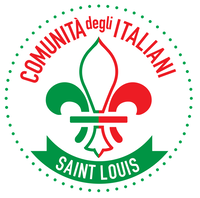
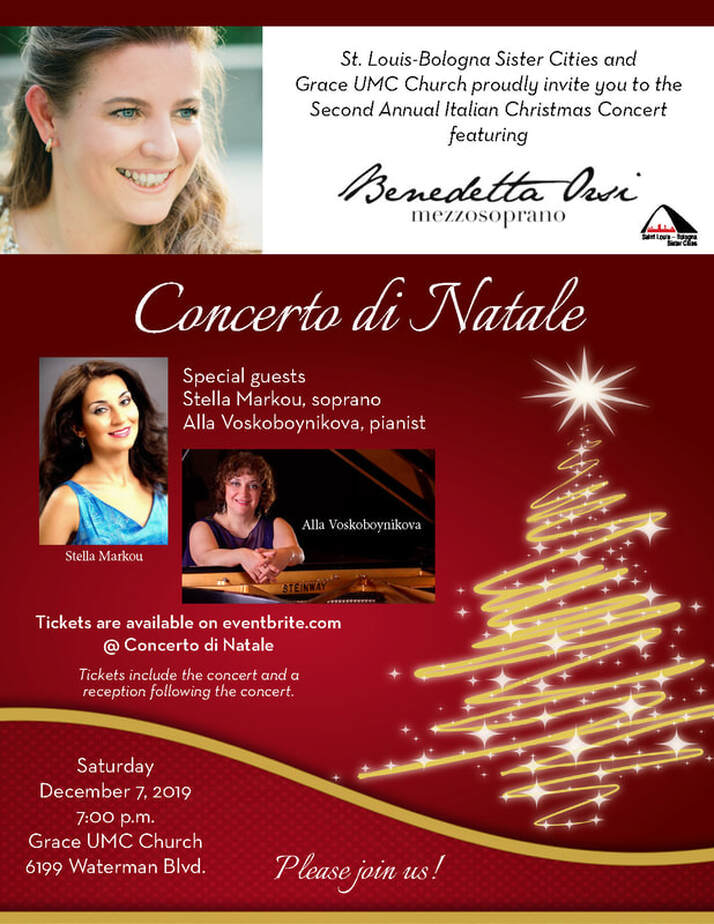
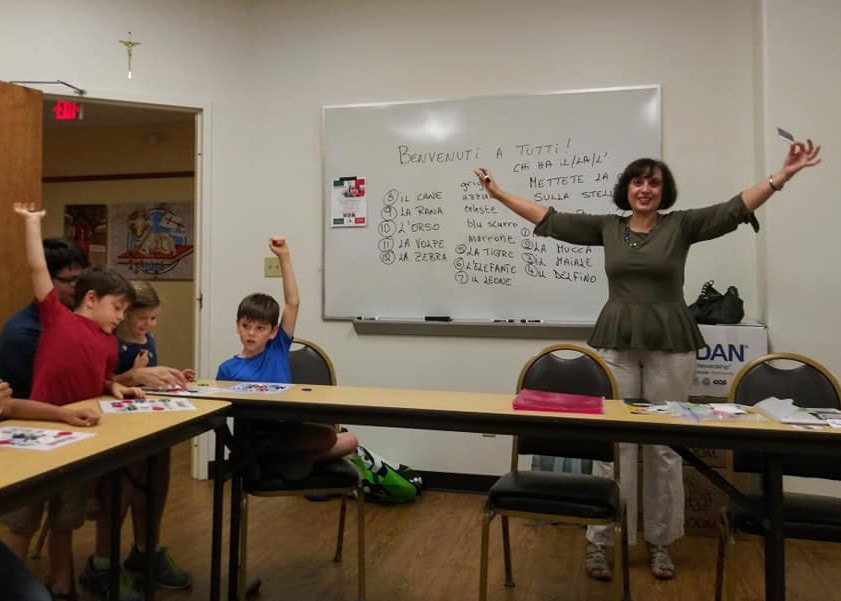
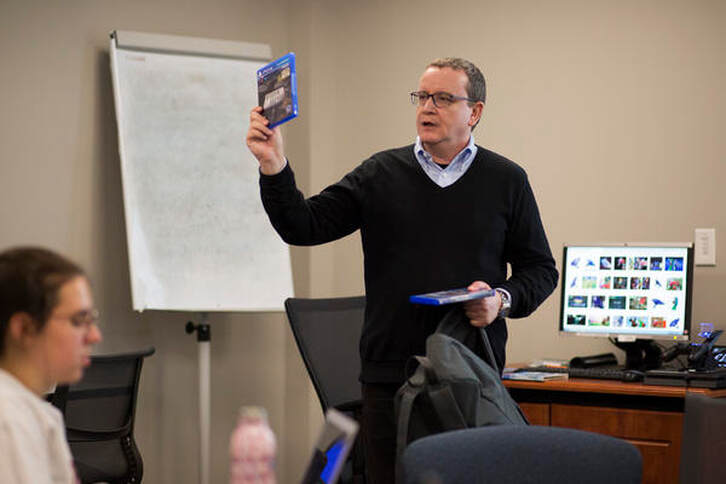
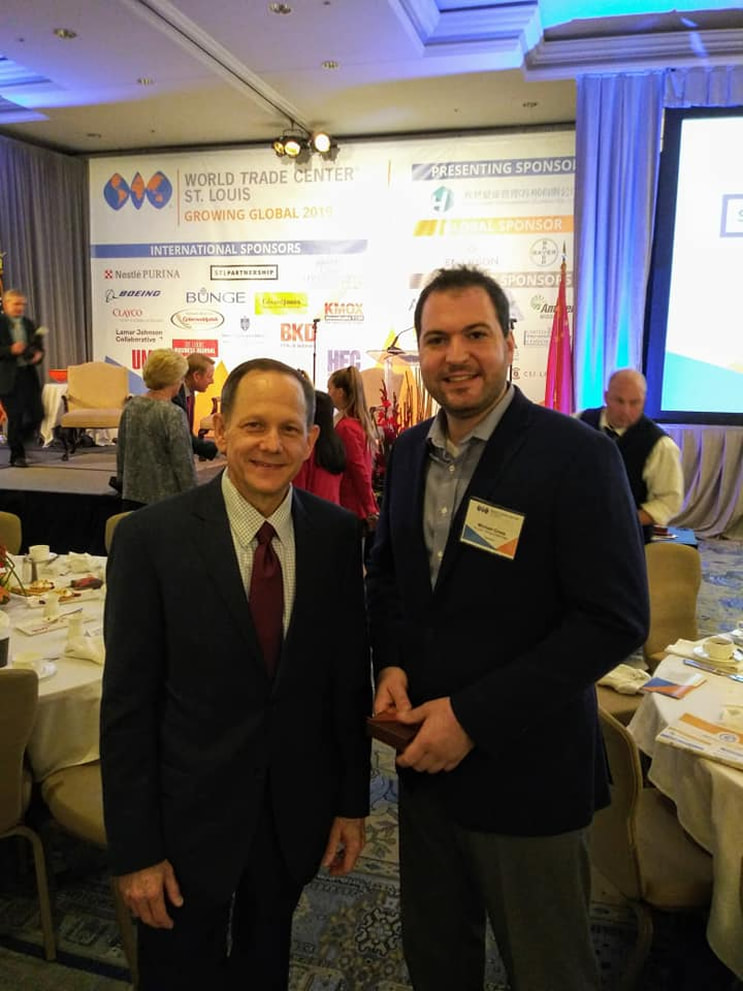
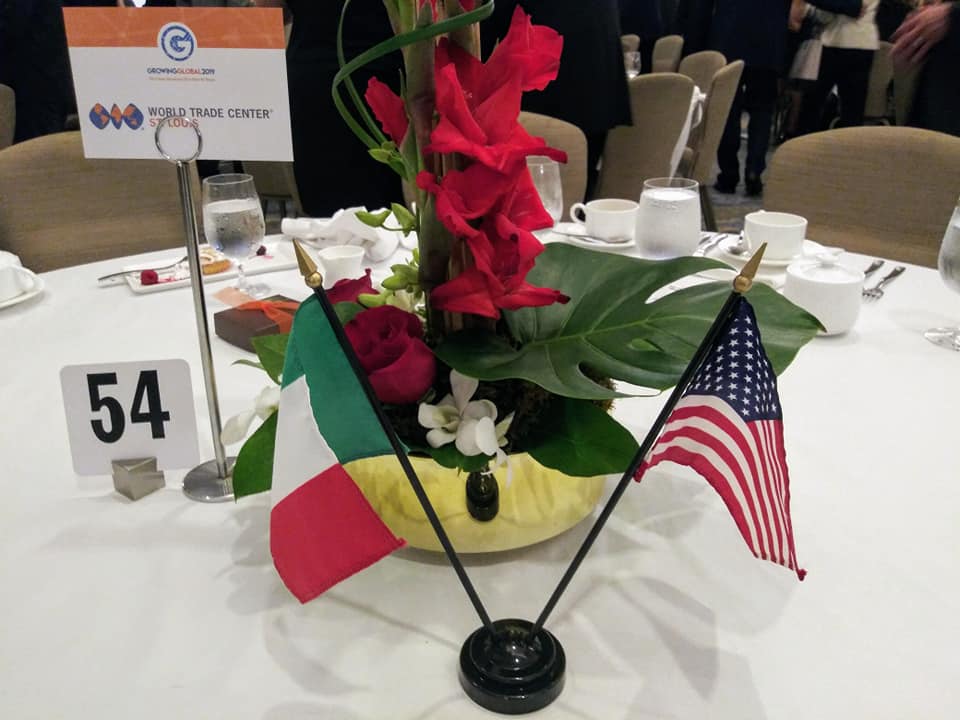
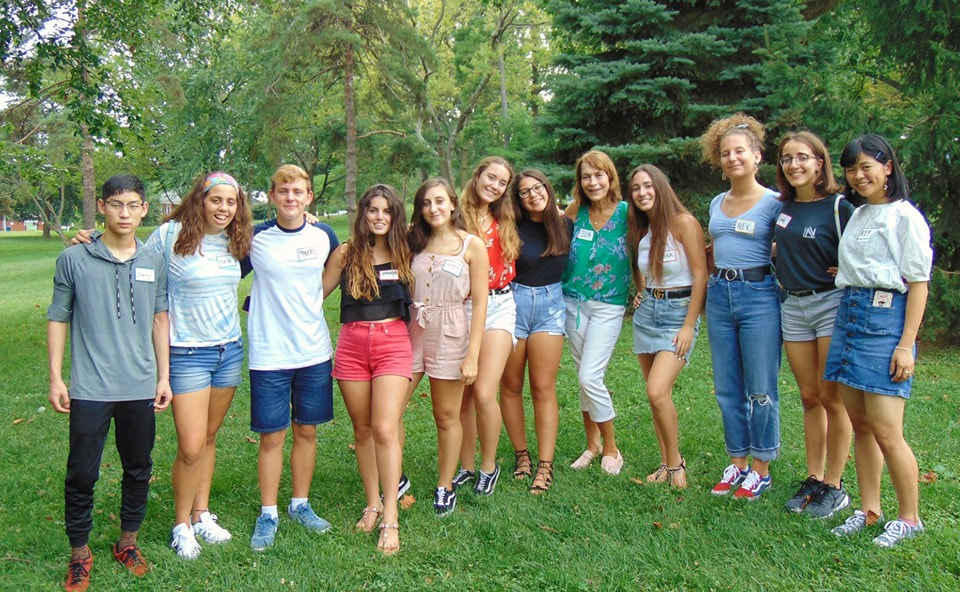
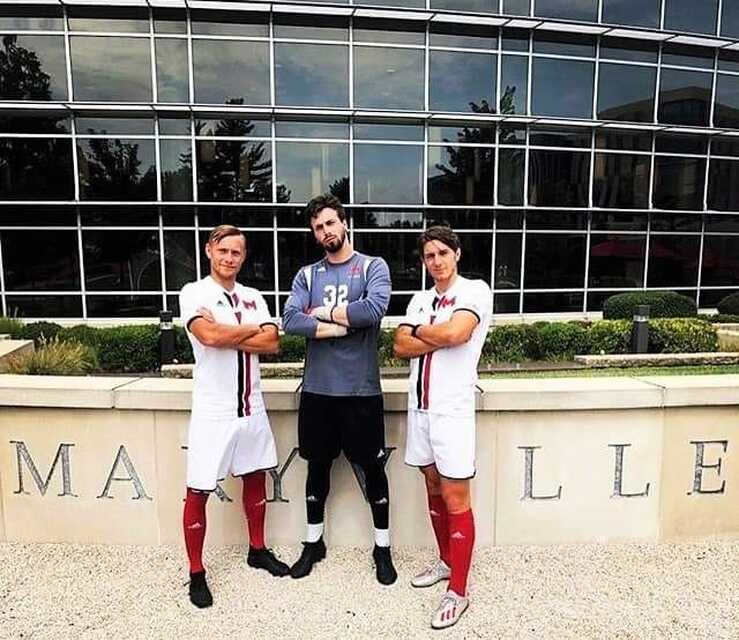
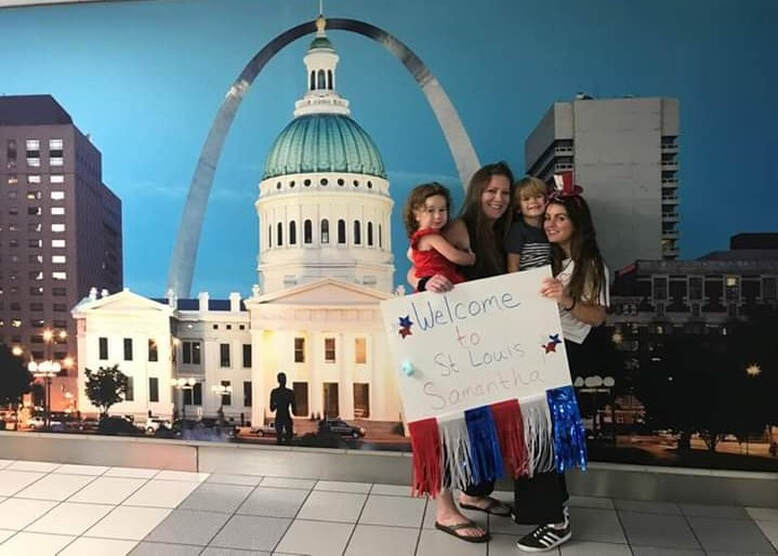
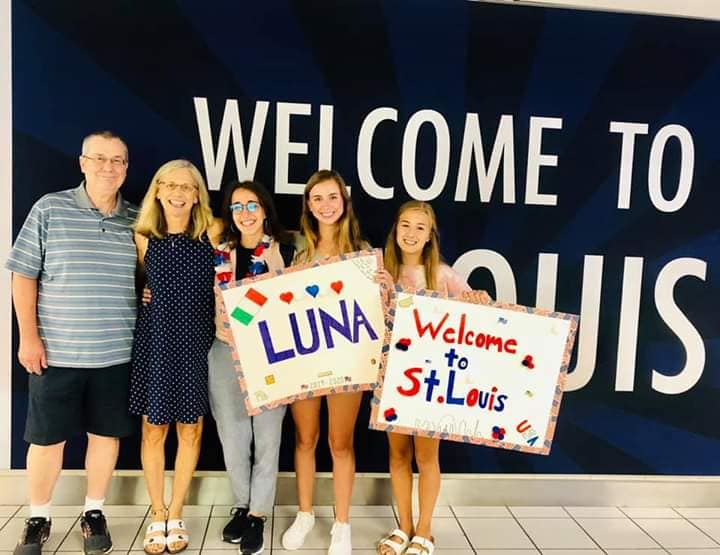
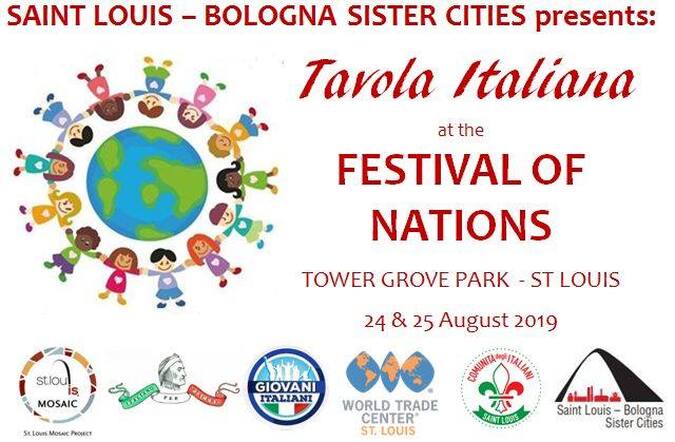
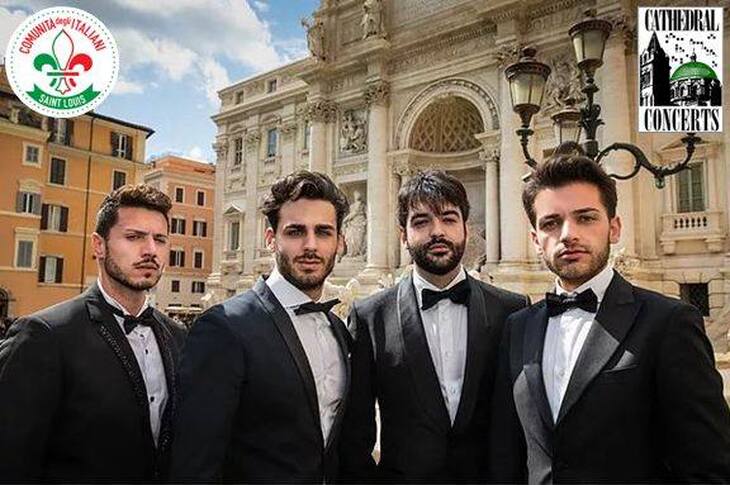
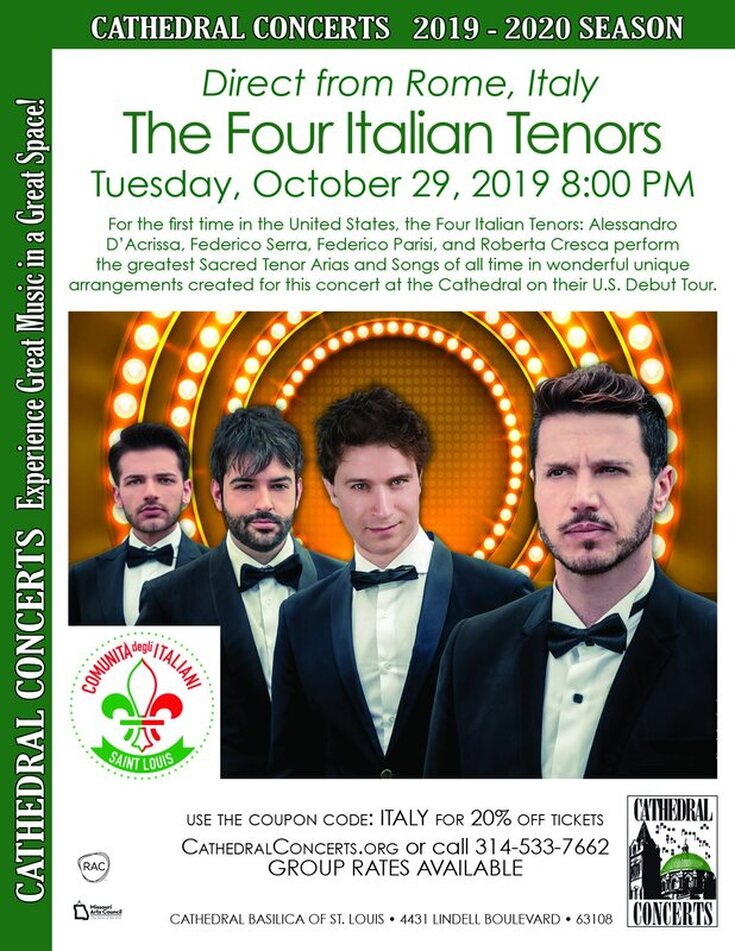
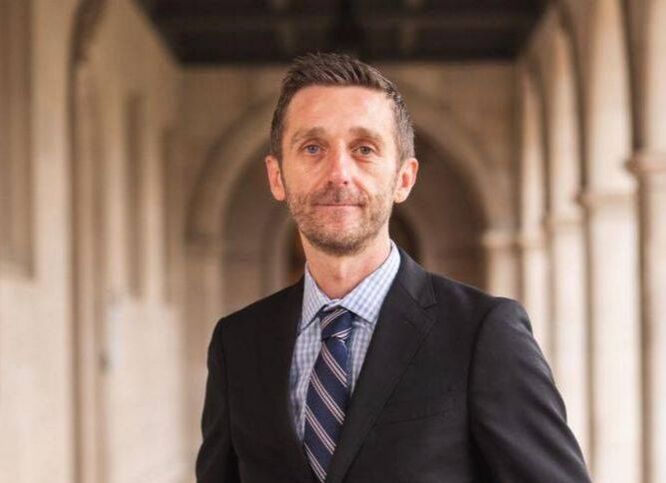


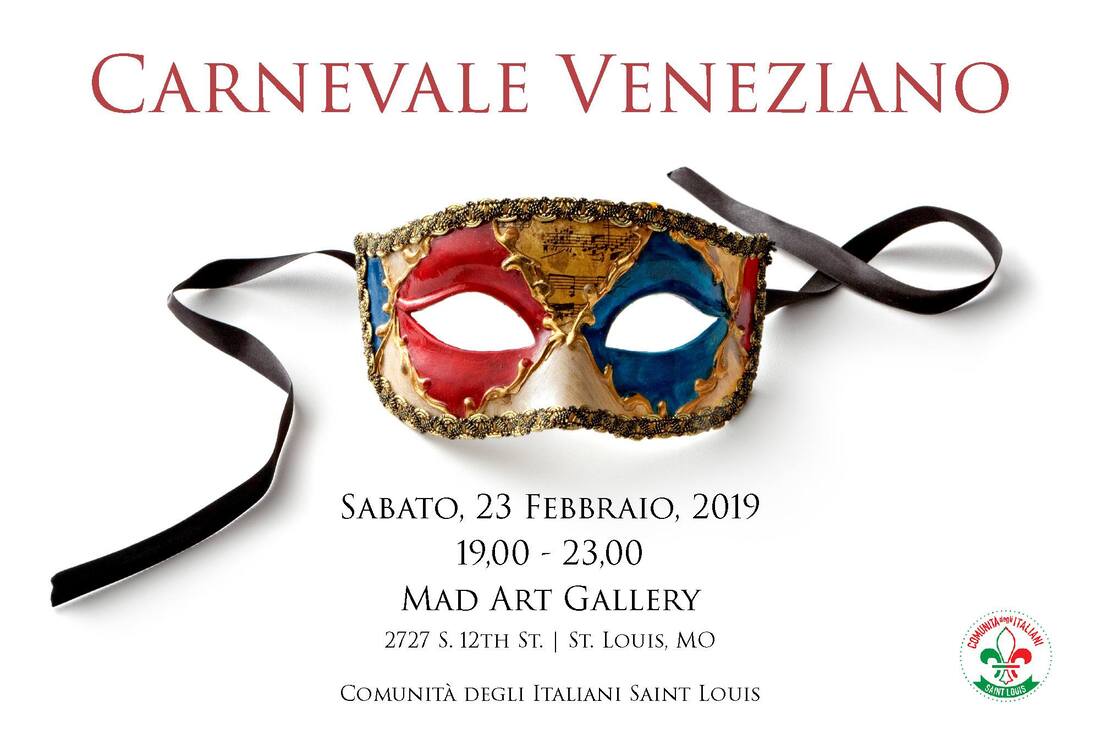
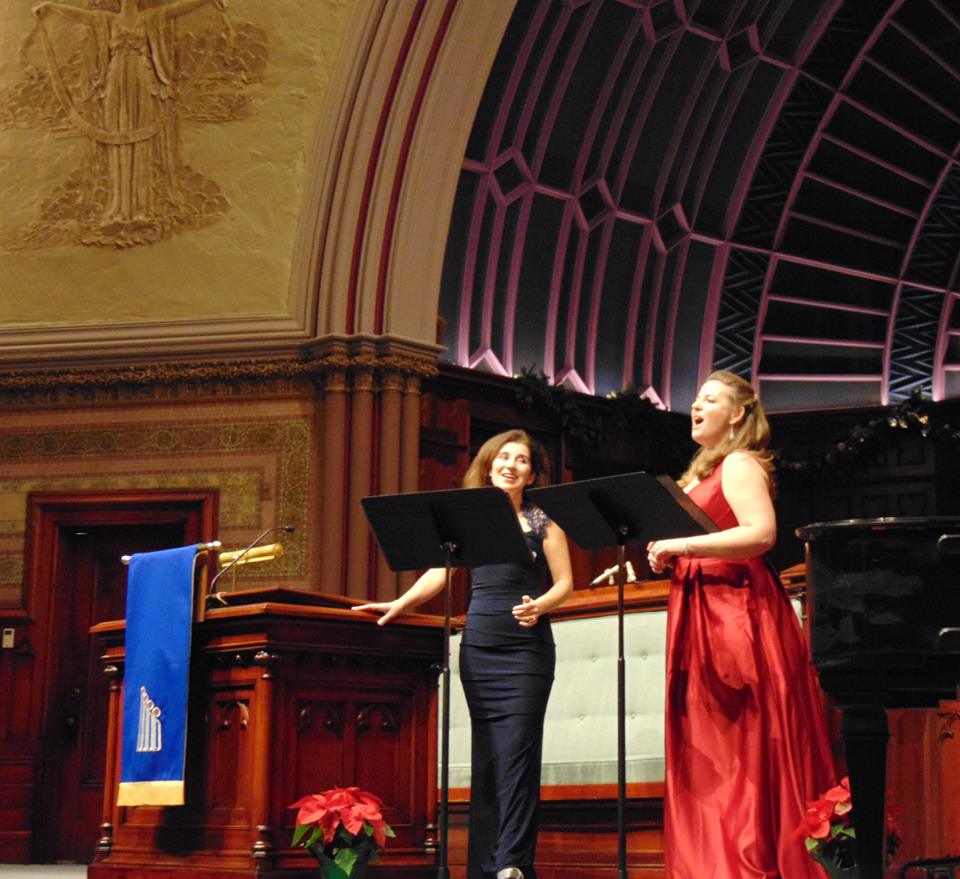
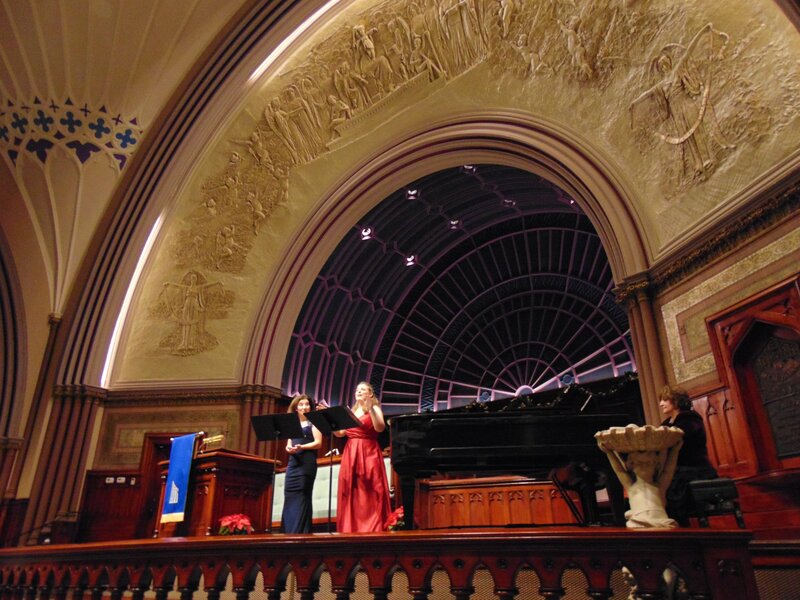
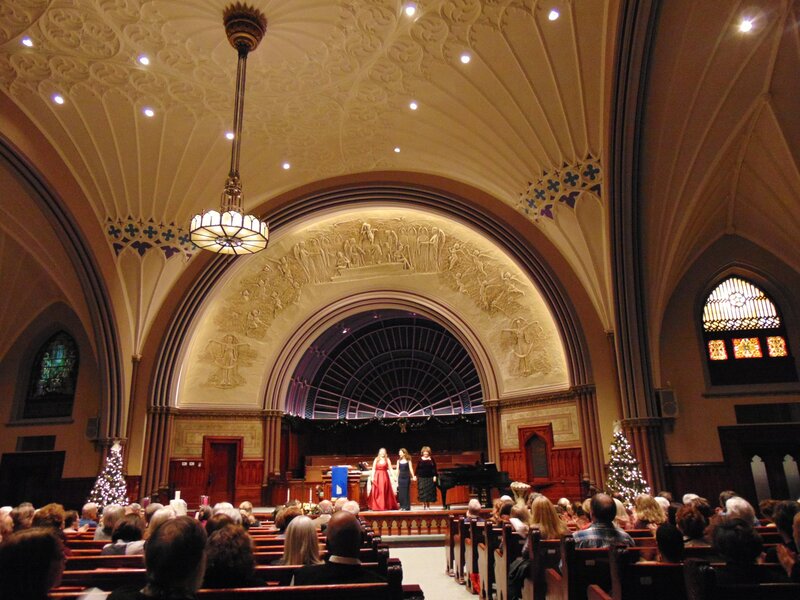
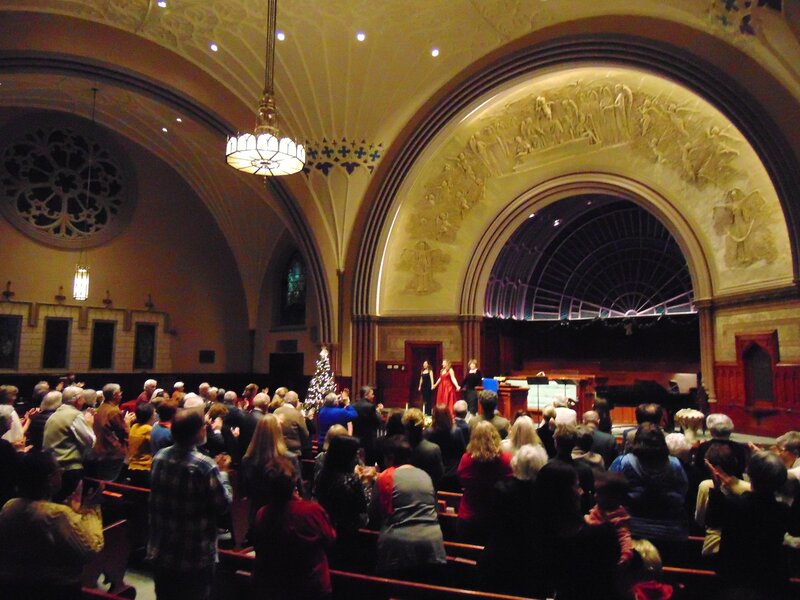
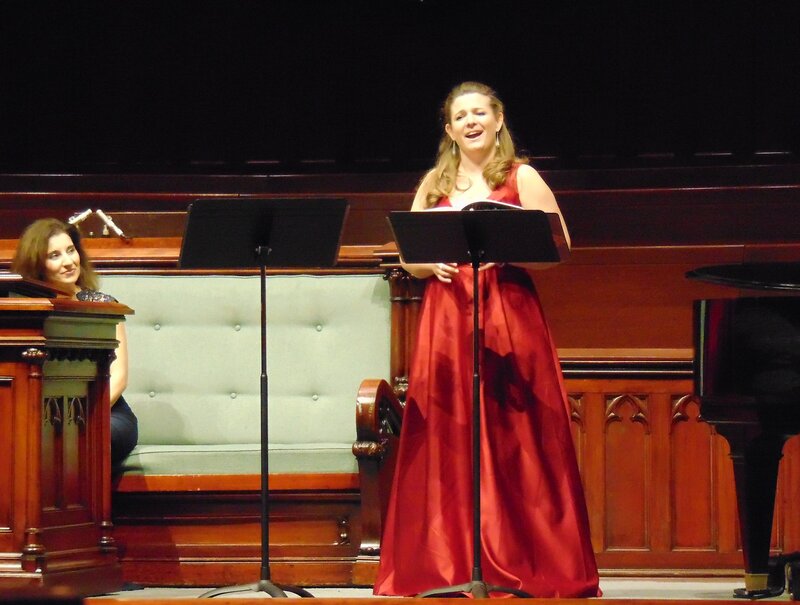
 RSS Feed
RSS Feed
